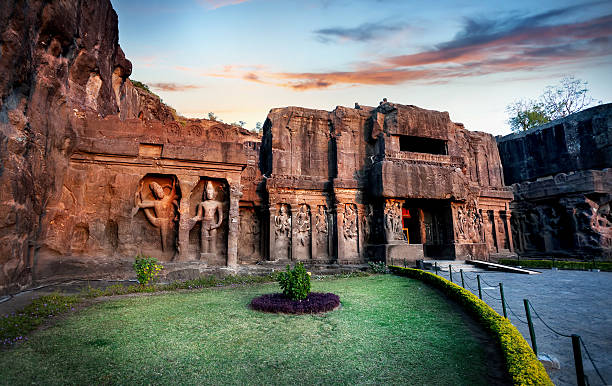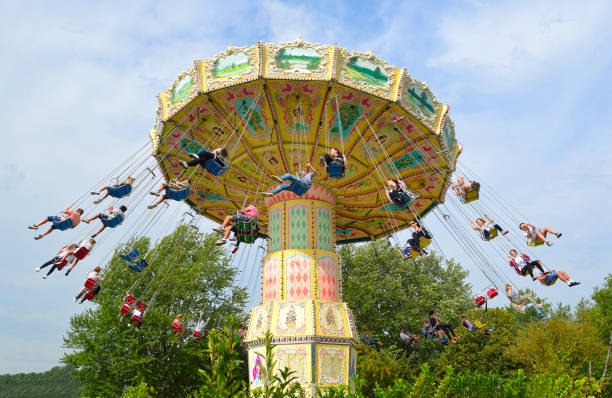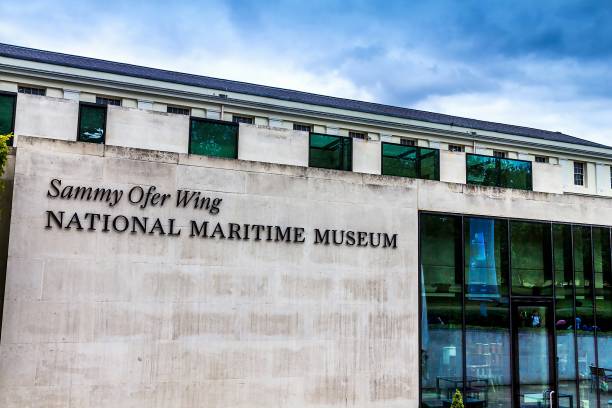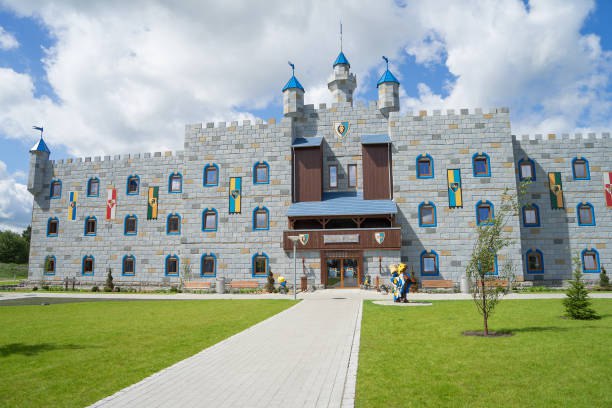Nestled in the western state of Maharashtra, India, the Ellora Caves are an awe-inspiring testament to the country’s rich cultural and spiritual heritage. With their stunning rock-cut architecture, intricate carvings, and seamless integration of Hindu, Buddhist, and Jain elements, these caves offer an unparalleled glimpse into India’s ancient history, artistic mastery, and diverse religious practices. For travelers, historians, and art lovers, a visit to Ellora is like stepping into a world where history, art, and spirituality converge.
The Story Behind Ellora Caves
The Ellora Caves, also referred to as the Verul Caves, are a group of 34 monasteries and temples intricately carved into the rocky hillsides of the Charanandri Hills. These caves were excavated over several centuries, from the 5th to the 10th century AD, under the rule of various Indian dynasties, most notably the Rashtrakuta dynasty. As a UNESCO World Heritage Site, the caves stand out for their architectural brilliance, historical significance, and cultural diversity.
Though the caves were primarily designed for religious use, they also served as living quarters for monks, scholars, and artisans. Spanning approximately 2 kilometers, the caves display a wide array of architectural styles and religious themes, offering an artistic portrayal of India’s spiritual diversity with representations of Hinduism, Buddhism, and Jainism all coexisting within the same complex.
Exploring the Ellora Caves: A Harmony of Art, Architecture, and Religion
The Ellora Caves are divided into three distinct groups based on their religious affiliations: Buddhist, Hindu, and Jain caves. Each group reflects a different period of history and showcases unique artistic techniques and architectural innovations.
Buddhist Caves (Caves 1-12)
The Buddhist caves are the oldest, dating back to the 5th century AD. These caves were primarily used as viharas (monastic dwellings) and chaityas (prayer halls) for Buddhist monks. The interiors of these caves are adorned with intricate carvings depicting scenes from the life of Buddha and other Buddhist deities, providing a serene and peaceful atmosphere for meditation and reflection.
Among the Buddhist caves, Cave 10, also known as the Vishvakarma Cave, stands out for its impressive size and detailed carvings, including a large seated statue of Buddha. Cave 12, known as Tin Tala, is another notable cave with its grand architecture and fascinating relief sculptures.
Hindu Caves (Caves 13-29)
The Hindu caves, carved between the 7th and 9th centuries AD, reflect the peak of the Rashtrakuta dynasty's power. These caves were dedicated to various Hindu deities, and their walls are covered with elaborate depictions of Hindu mythology and spiritual practices. The craftsmanship in these caves is exceptional, showcasing the religious fervor and artistic brilliance of the time.
The Kailasa Temple (Cave 16) is the crown jewel of the Hindu cave complex. Carved from a single piece of basalt rock, the Kailasa Temple is the largest monolithic structure in the world and is a remarkable feat of engineering. Dedicated to Lord Shiva, the temple is adorned with detailed sculptures, including scenes from Hindu mythology, such as the Ravana lifting Mount Kailash and the marriage of Shiva and Parvati. This awe-inspiring temple demonstrates the extraordinary skill and creativity of the craftsmen who worked on its construction.
Other important caves in this section include Cave 21, which features a grand shrine to Lord Vishnu, and Cave 29, which showcases intricate depictions of the Shiva-Ravana myth.
Jain Caves (Caves 30-34)
The Jain caves, the most recent of the three groups, were carved between the 9th and 10th centuries AD. These caves are known for their refined artistry and delicate carvings, reflecting the Jain philosophy of peace, non-violence, and the pursuit of spiritual enlightenment. The detailed carvings within these caves depict the lives of Tirthankaras, the spiritual teachers of Jainism.
Among the Jain caves, Cave 32 stands out, with a large statue of Shitalnath, the 10th Tirthankara, and intricate sculptures that illustrate Jain cosmology and the journey of the soul. The Jain caves are more refined and delicate in design compared to the Hindu caves, offering a peaceful contrast to the grandeur of the larger Hindu temples.
The Kailasa Temple: A Monumental Achievement
Without a doubt, the Kailasa Temple (Cave 16) is the most iconic and awe-inspiring structure at the Ellora Caves. This monolithic temple is carved from a single piece of basalt rock, making it a remarkable example of rock-cut architecture. The Kailasa Temple is dedicated to Lord Shiva and is designed to resemble a mountain, symbolizing the sacred Mount Kailash. Its massive pillars, intricate carvings, and large sculptures such as Nandi (Shiva's bull) and scenes from the Shiva-Parvati marriage are testaments to the ancient Indian artists' skill and ingenuity.
Standing at around 30 meters tall, the Kailasa Temple is the largest single monolithic structure in the world. The temple’s layout and sculptural details are an extraordinary achievement, reflecting both the artistic and architectural brilliance of the Rashtrakuta dynasty.
The Artistry of Ellora: A Testament to Ancient Indian Craftsmanship
The Ellora Caves are an extraordinary showcase of ancient Indian art, with intricate carvings that bring gods, goddesses, mythological tales, and daily life to life. The artwork within the caves provides a fascinating glimpse into the cultural, spiritual, and social milieu of ancient India.
Each cave is a work of art in itself, with figures and reliefs carved with remarkable precision and attention to detail. Whether it's the Buddhas in Cave 10, the mythological reliefs in Cave 29, or the serene depictions of Jain Tirthankaras, the art within the caves reveals a profound understanding of form, proportion, and religious symbolism. The carvings showcase the craftsmanship of the artisans who spent generations shaping these monumental works, leaving a legacy that continues to inspire visitors today.
Planning Your Visit to Ellora Caves
Visiting the Ellora Caves is like embarking on a journey through time. Here are some tips for a successful trip:
Best Time to Visit
The most pleasant time to visit the Ellora Caves is between October and March, when the weather is cooler and more comfortable for exploring the caves. During the summer months (April to June), the temperatures can soar above 40°C (104°F), making outdoor exploration less comfortable.
How to Reach Ellora
The Ellora Caves are located about 30 kilometers (19 miles) from Aurangabad, which is well-connected by air, rail, and road to major cities in India. You can fly to Aurangabad Airport or take a train from cities like Mumbai, Delhi, and Pune. From Aurangabad, taxis and local transportation can easily take you to the caves.
Nearby Attractions
In addition to the Ellora Caves, the region is home to other noteworthy attractions. The Ajanta Caves, located about 100 kilometers (62 miles) from Ellora, are another UNESCO World Heritage Site and are renowned for their Buddhist rock-cut temples and paintings. Other notable sites near Ellora include the Daulatabad Fort, the Bibi Ka Maqbara, and the Grishneshwar Temple.
What to Wear and Bring
Due to the relatively dry climate in the region, it’s important to wear comfortable, breathable clothing, especially during the summer. Good walking shoes are essential, as you’ll be walking and climbing to explore the caves. Be sure to carry water, sunscreen, and a hat to protect yourself from the sun.
"Dreaming of your next adventure? Let the Ellora Caves be just the beginning! Start your journey with skyroutetravel.com and discover unforgettable experiences.

 India
India
 Sri Lanka
Sri Lanka




0 comments for this post